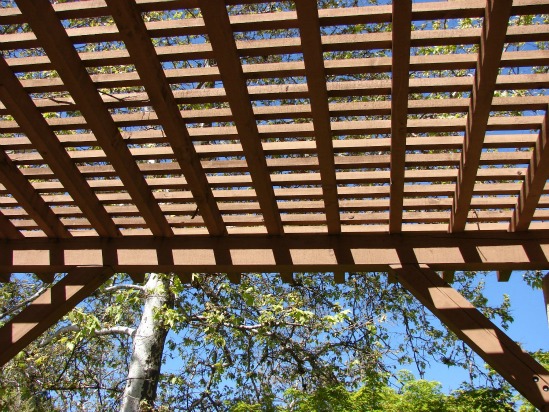Wooden Trellises
Because they are growing surfaces for climbing plants, wooden trellises are means of bringing height and depth to garden designs. These garden features can provide support for training an endless variety of plants, from deciduous and evergreen vines to climbing roses. In fact, the real beauty can happen when these plants take over and become an organic extension of their supports, thus creating an architectural quality of their own. Whether the intent is to add beauty and interest to a property or to screen off an unsightly view, these outdoor structures are invaluable. They can also provide aesthetic appeal to gardens in cold climates when plants have died back for the season.
These garden features may be as uncomplicated as simple pieces of latticework secured to arbors, fences, or the sides of buildings. On the other hand, they may be detailed, freestanding structures that draw attention to particular areas and serve as focal points for landscape designs. They may also be situated just about anywhere they are needed.

Creating garden structures that serve as supports for plants is a practice extending far back into human history. Whether wrapped with romantic climbing roses, or laced with honeysuckle, these favorite garden features have been utilized for millennia. In fact, ancient Egyptian hieroglyphs depict grapes being grown on them. The Phoenicians and other Mediterranean cultures also trained and took advantage of plants that could grow vertically on trellises. This system for growing climbing plants has lasted throughout history because it works so well. When utilized in today’s landscape designs, these versatile forms of garden architecture can bring some of the beauty and majesty of antiquity to a modern yard.

Even the smallest plot of outdoor space can be accented with the dynamism of vertically growing plants on one of these garden features.
From Wooden Trellises to Garden Trellises, Arbors, and Pergolas